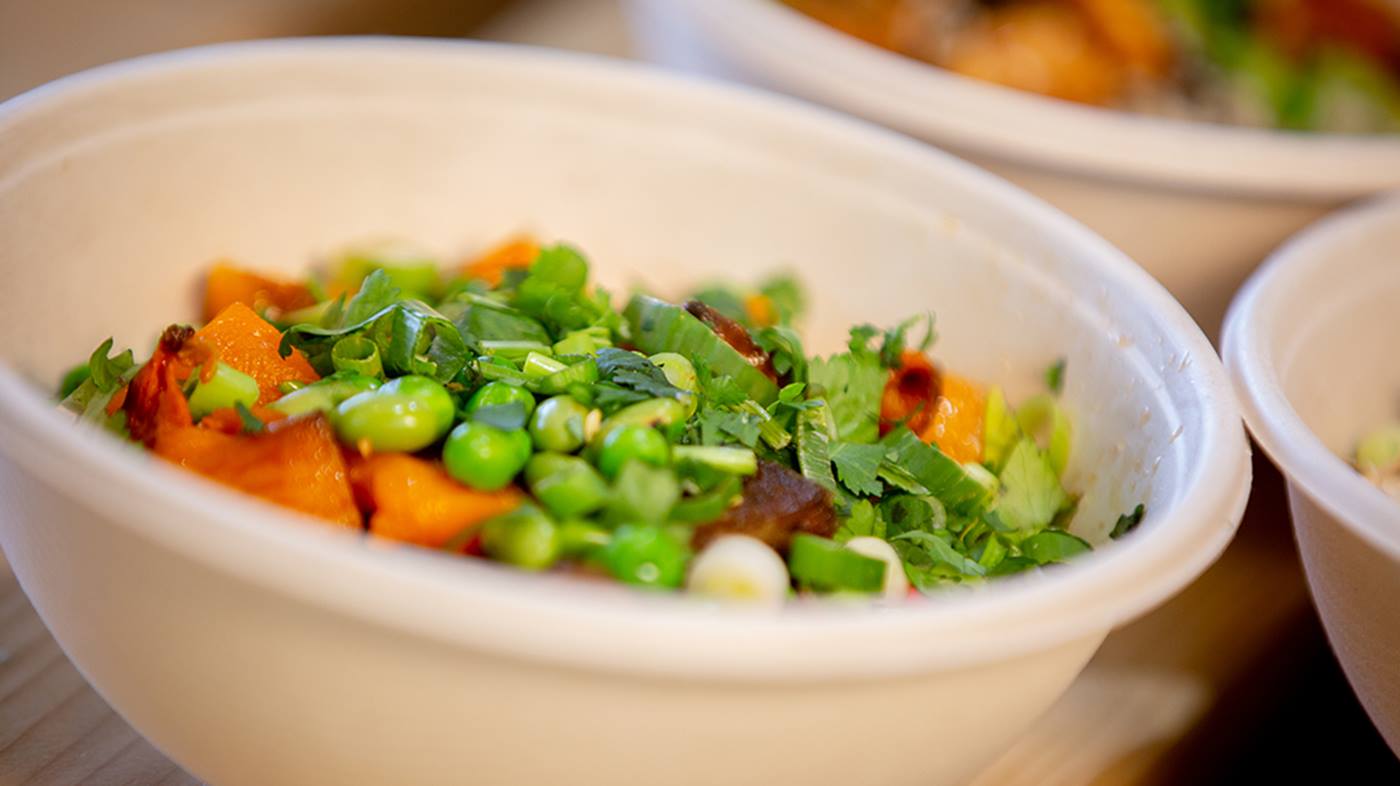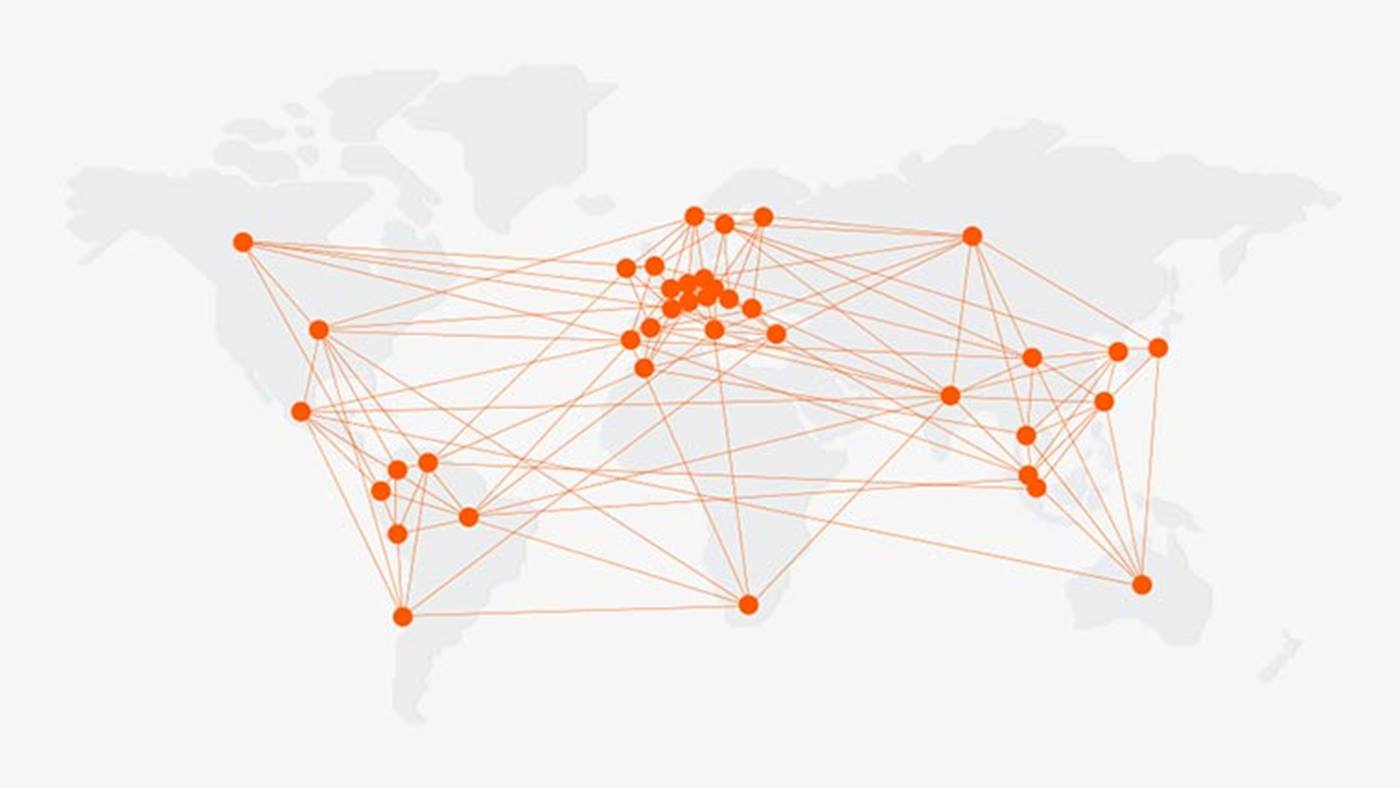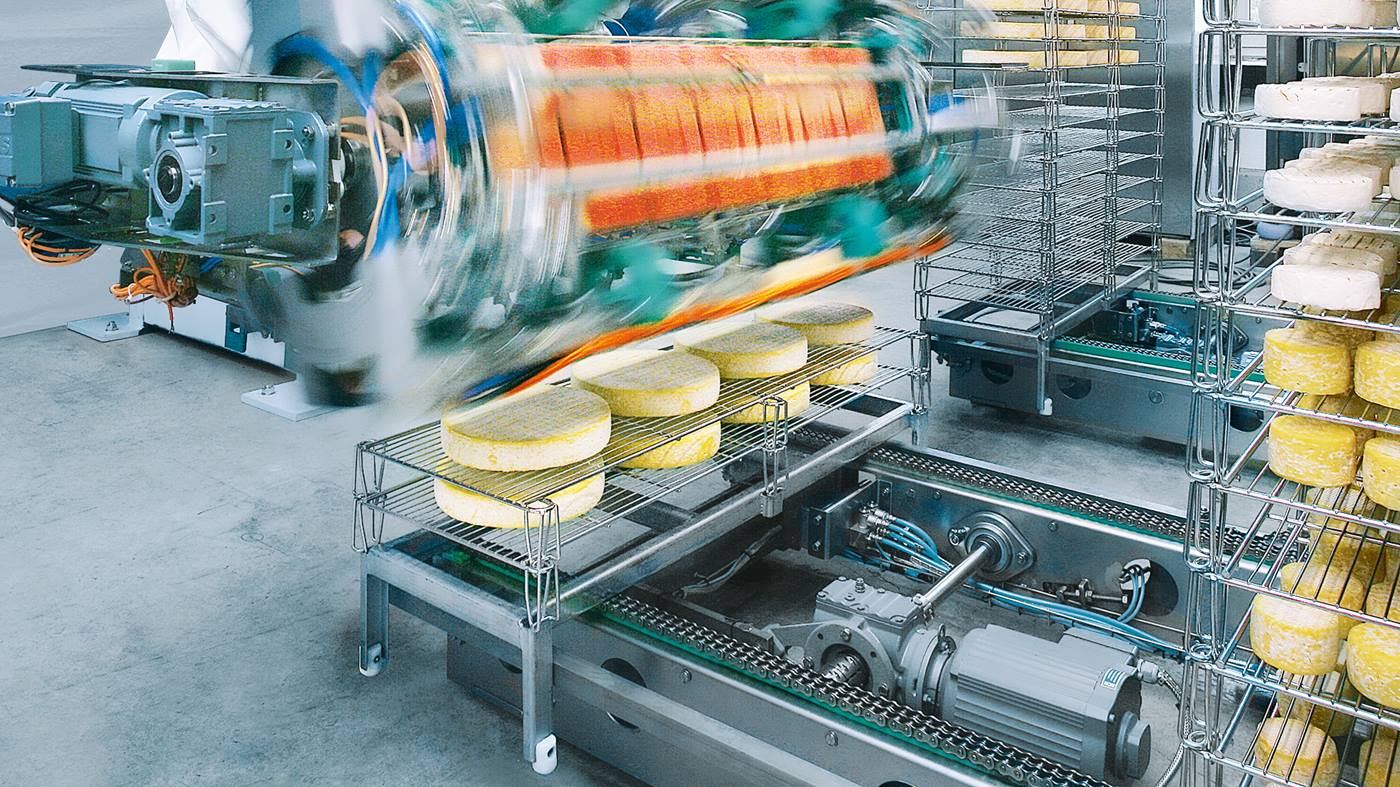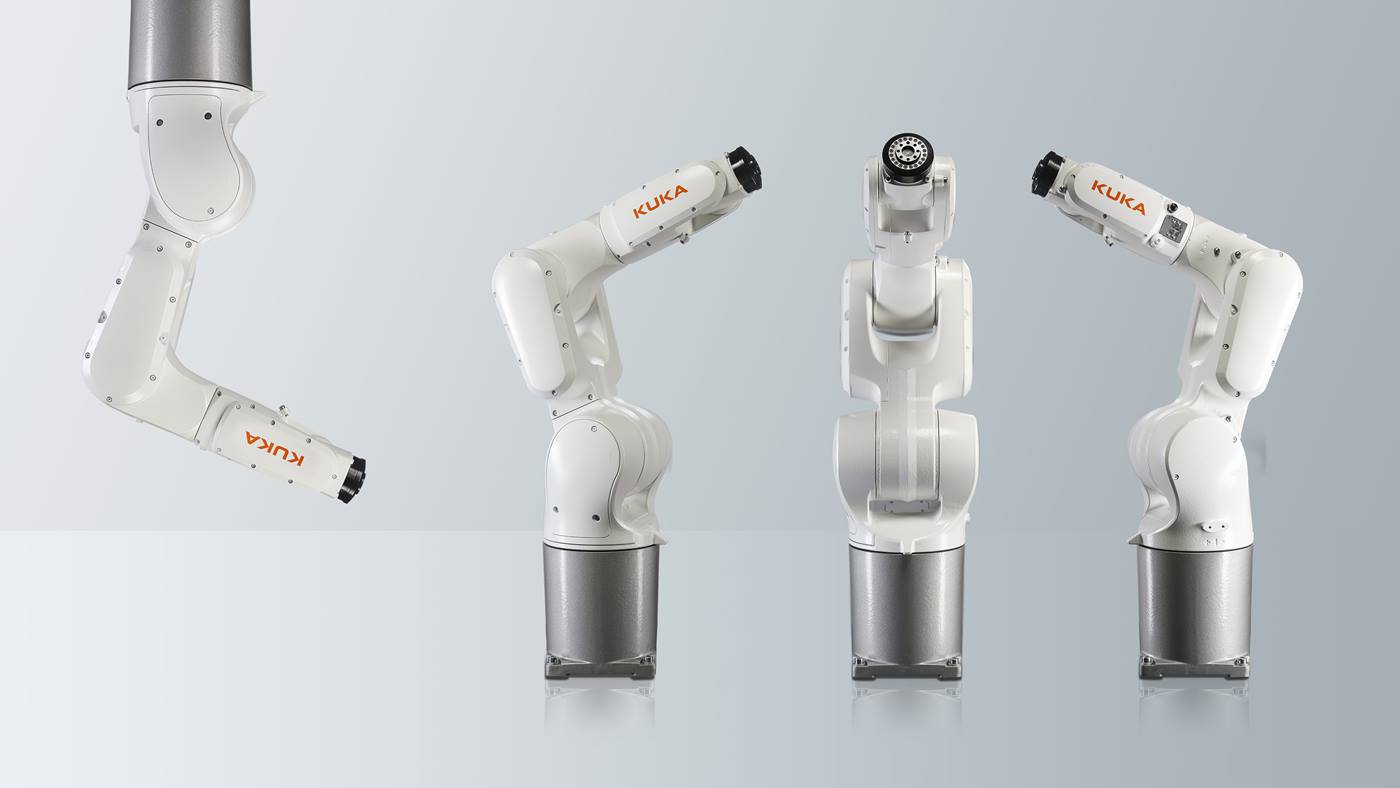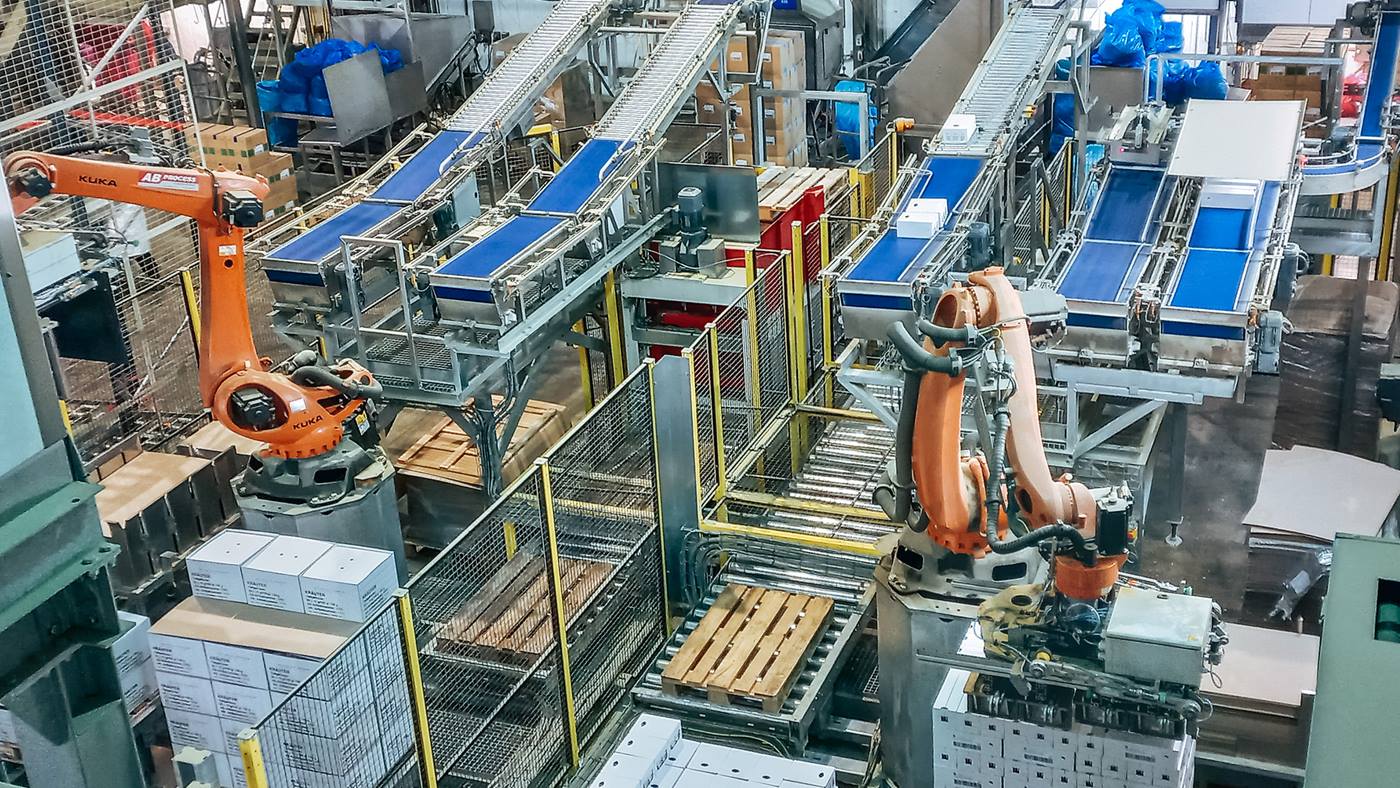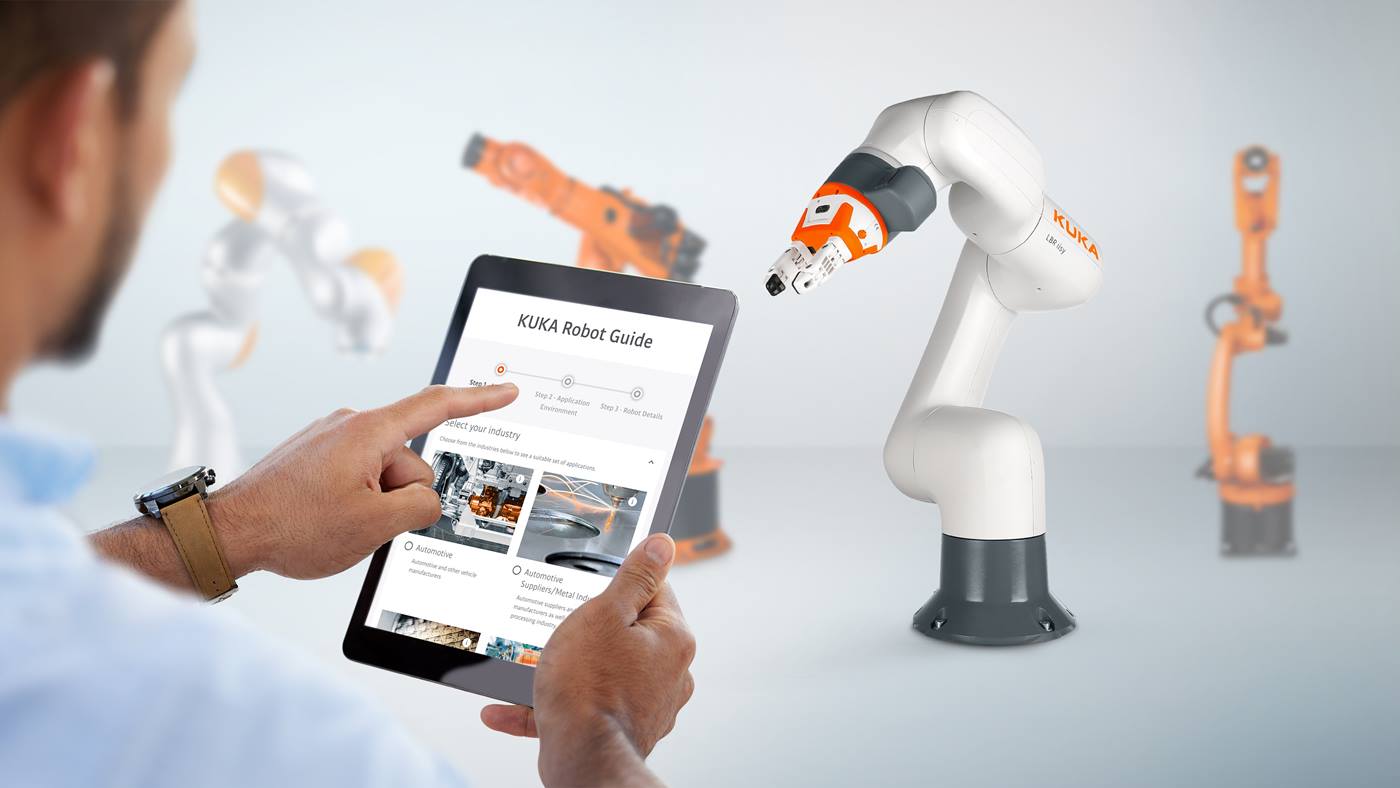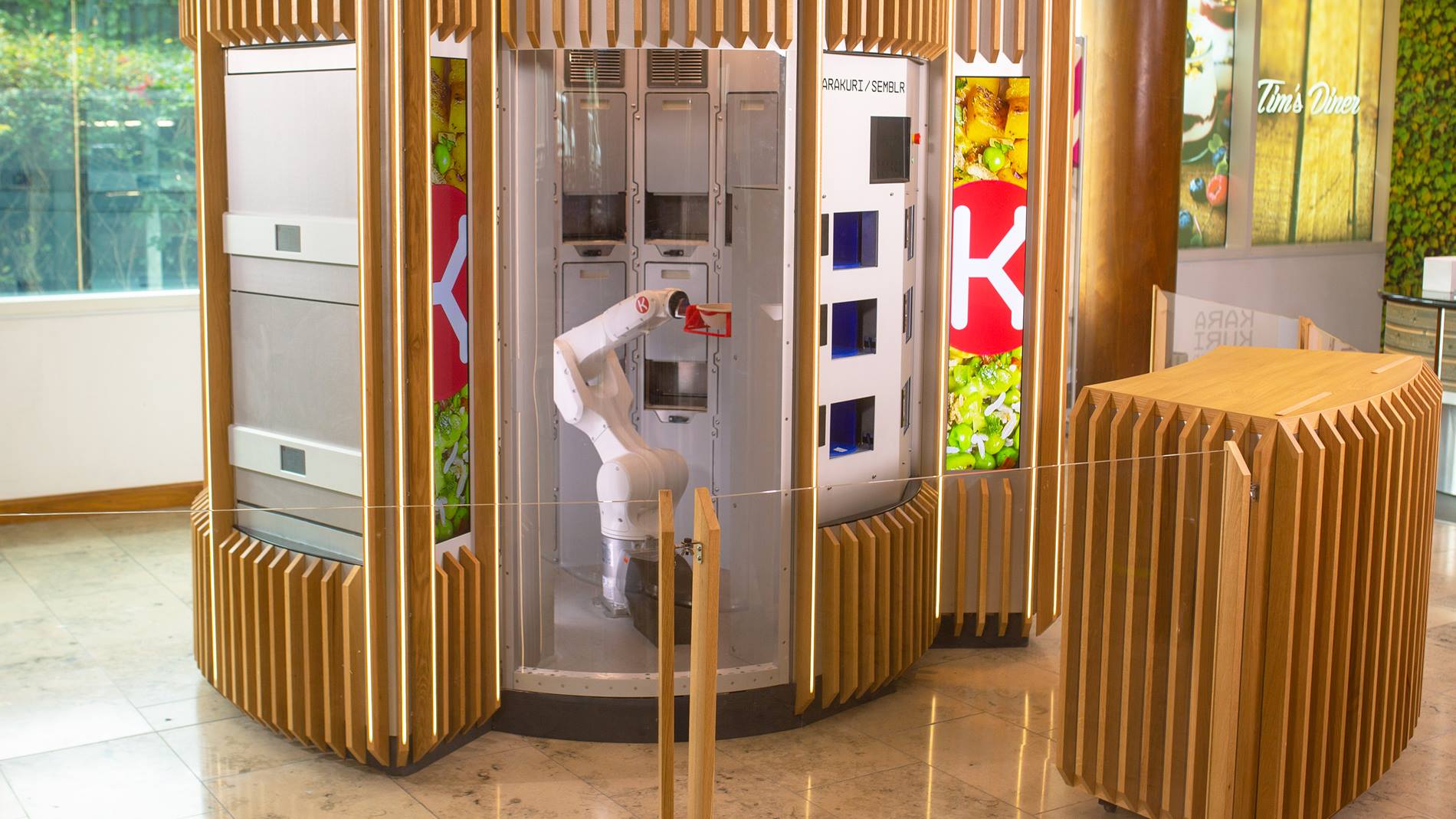
When the robot fills the rice bowl
Semblr is probably the most famous canteen employee in the UK at the moment. That is because the centerpiece of Semblr is a KUKA robot, or to be more precise: a KR AGILUS. Since September 2021, Semblr has created fresh rice dishes for the workforce of online grocery retailer Ocado in Hatfield.
On September 23, 2021, Semblr began working at “Tim’s Diner.” It now offers an alternative to the conventional lunch menus in the staff canteen of online grocery retailer Ocado. If you are hungry, you can choose a typical plate filled by a person at the counter – or head to a 2.50 m wide by 2 m high cylindrical booth in which a KR AGILUS creates and serves rice dishes.
Karakuri develops service robot
The brains behind Semblr come from integrator Karakuri, a London startup that currently has 36 employees. Karakuri has been developing robot-based solutions for the food industry since 2019. In nearby Hatfield, Ocado was one of the investors in the creation of Karakuri because along with food, Ocado also specializes in hardware, software and logistics. That made it an easy decision to set up the first canteen service robot in Ocado’s headquarters, with 4,000 employees.
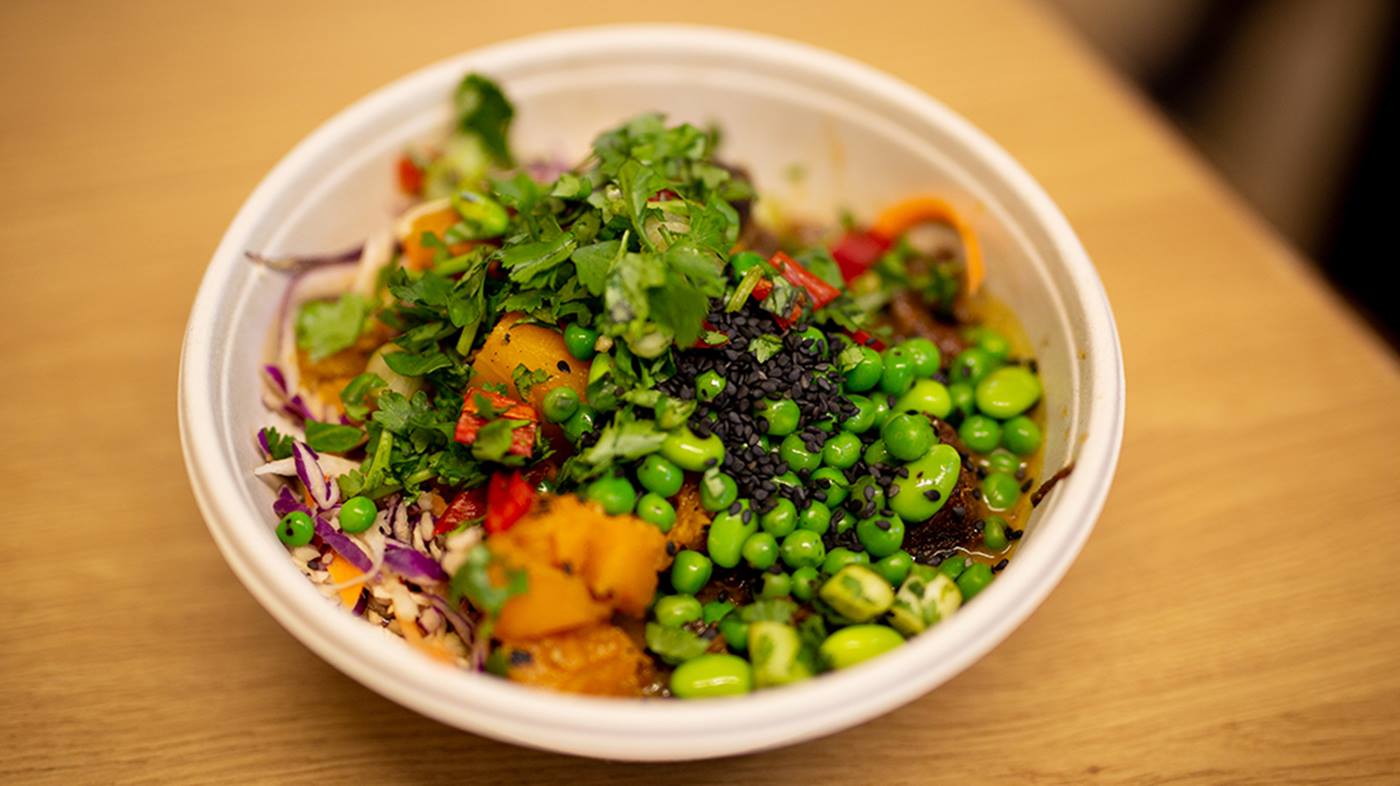
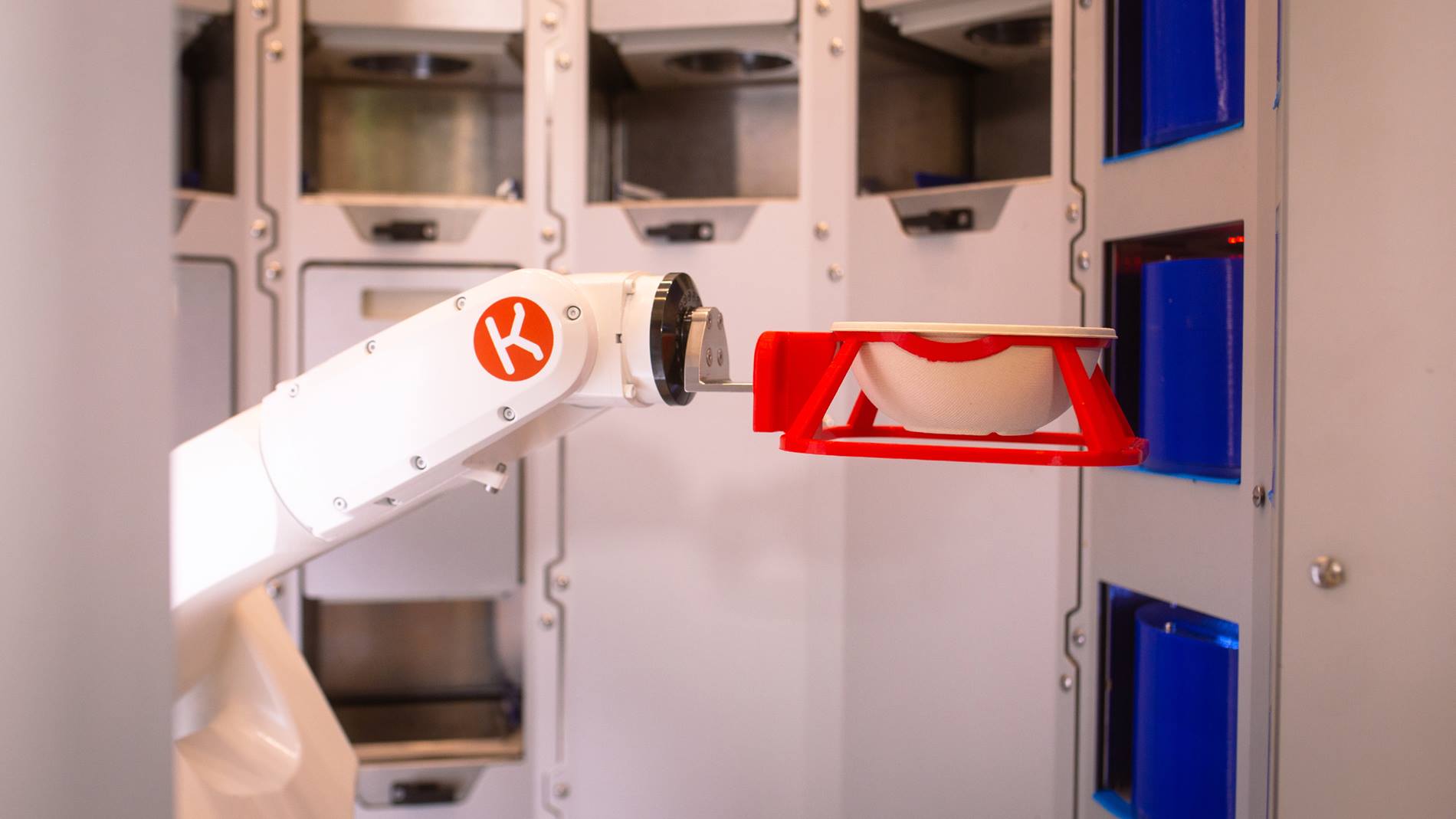
Easy ordering via app
Semblr can cool and heat its serving chambers, so all ingredients remain at an ideal temperature between 3° and 80° C. During service hours – currently 12-2 p.m. – a human presence supervises meal service. The preparation process includes a special feature: guests use an app to select in advance from 2,700 possible combinations of 17 available ingredients.
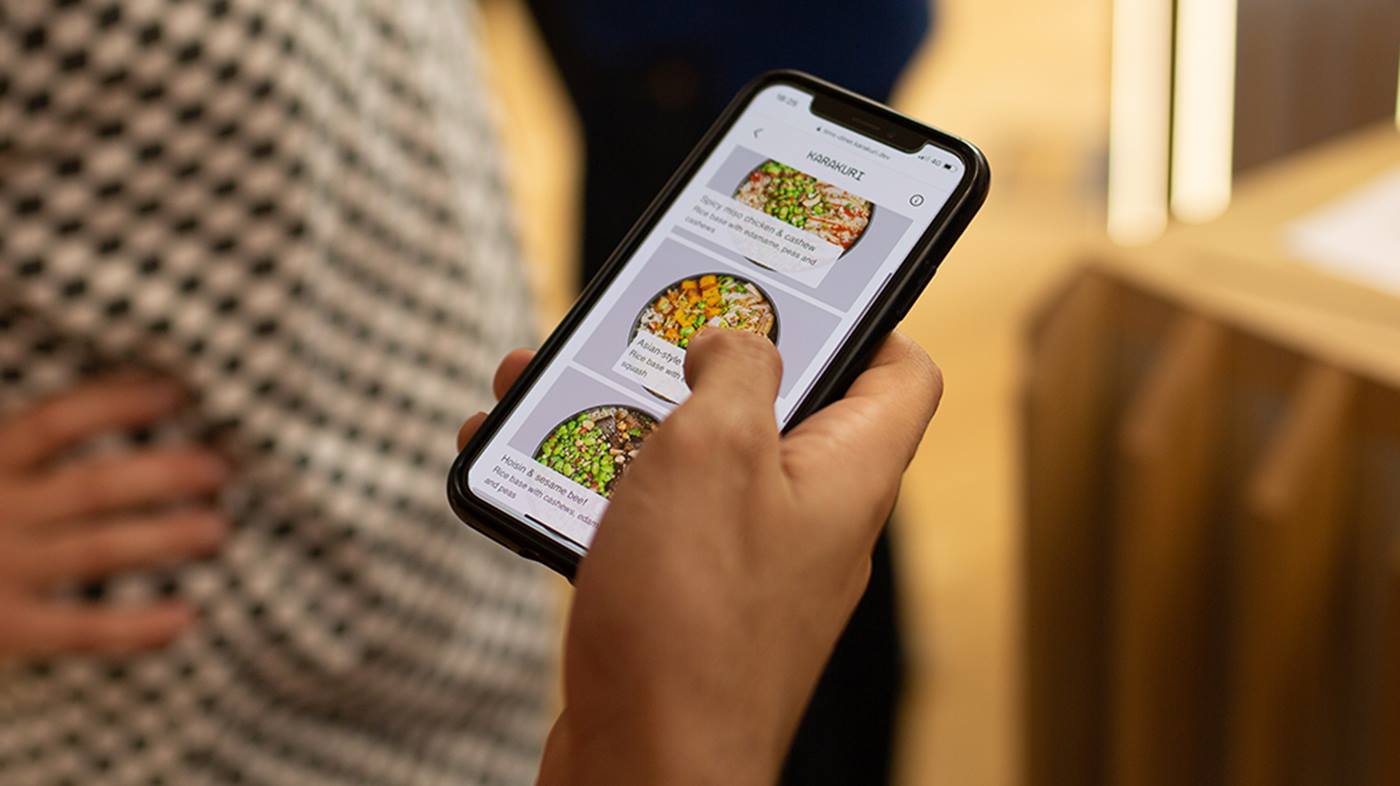
Farewell to queues!
Semblr delivers every meal with the desired serving size at the chosen time. The digital payment process produces a result that's unusual for Britain’s canteens: no queues in sight. “The idea that reduced interaction with others is an advantage may sound antisocial,” acknowledged Liam Rogers, Marketing and Communications Manager at Karakuri, “but the world has simply changed over the past year and a half because of the COVID-19 pandemic.” Guests encounter only one person on the way to their meal – the staff member who supervises Semblr and offers assistance if necessary – which reduces the risk of infection.
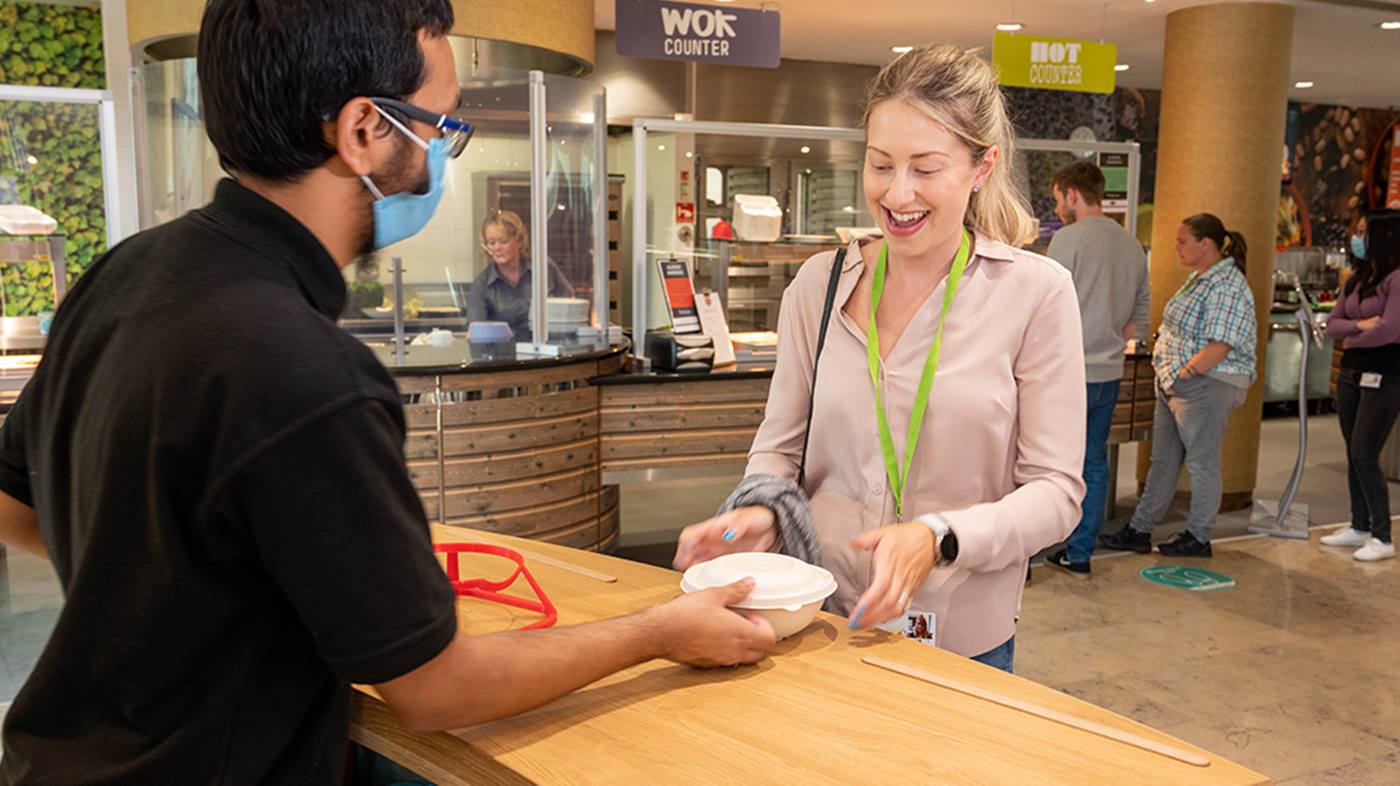
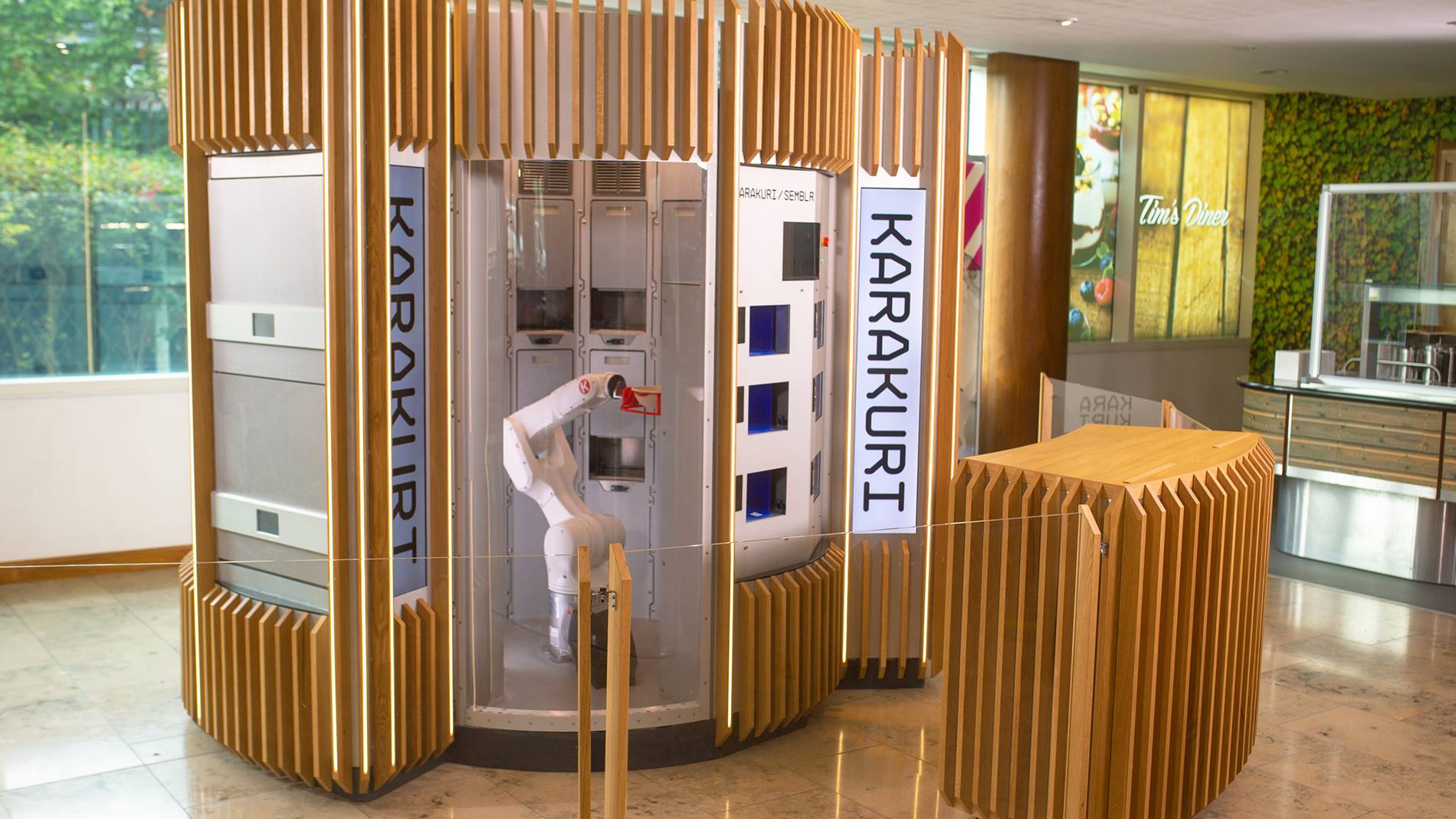
With a lot of advice to success
The development of Semblr primarily focused on easing the workload of kitchen and canteen teams through automation, while facilitating hygiene management and ensuring the high quality and customizability of meals. Joe Muller, Product Development Manager at Karakuri, revealed details from the two-year development process: “The robot arms we tried before just didn’t achieve the speed we needed. When we contacted KUKA, the team supported us and helped us navigate through the world of robot arms. We needed a flexible, space-saving robot that nevertheless had a long reach.” Only a small booth would fit in existing company canteens, but the robot arm needed a long reach to access as many serving chambers placed around it as possible. The KR AGILUS, a six-axis robot with a small footprint, was equal to the challenges, with a reach of up to 900 mm combined with speed and precision.
Step by step towards the canteen robot
The consultation with KUKA also helped Karakuri. “They worked with us to figure out the problems we had to solve and then suggested suitable packages,” Joe Muller continued. Finally, KUKA gave the Karakuri team a KR AGILUS to test. Muller recalled that “We tried it out and saw that everything worked. As soon as we had the right robot, we designed the machine around it.” This design needed no additional software solution, but it did use accessories, such as a gripper arm, filling hoppers and bowls that can be cleaned efficiently and easily. A prototype called DK-One was supposed to offer breakfast options starting in early 2020. Then came the pandemic, and the Karakuri team modified its plans.
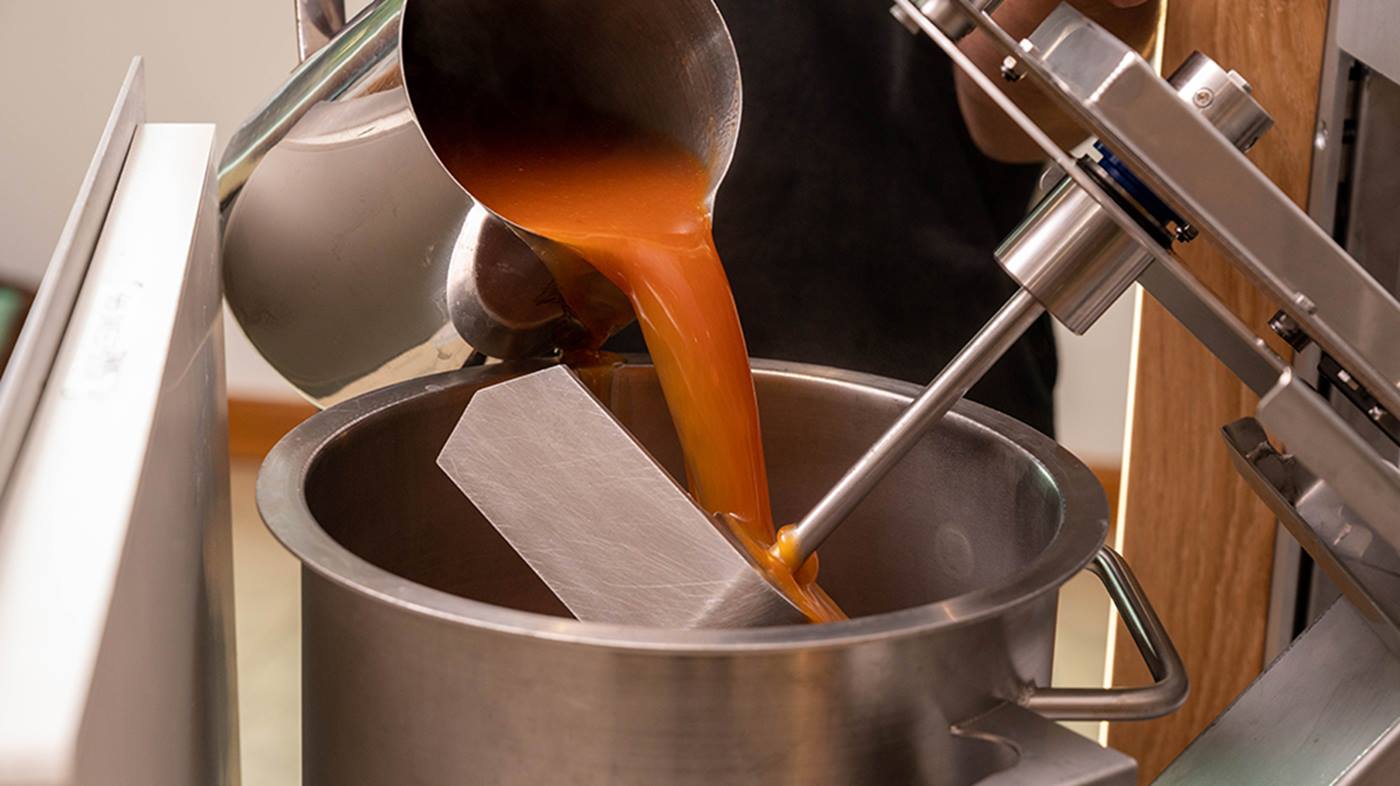
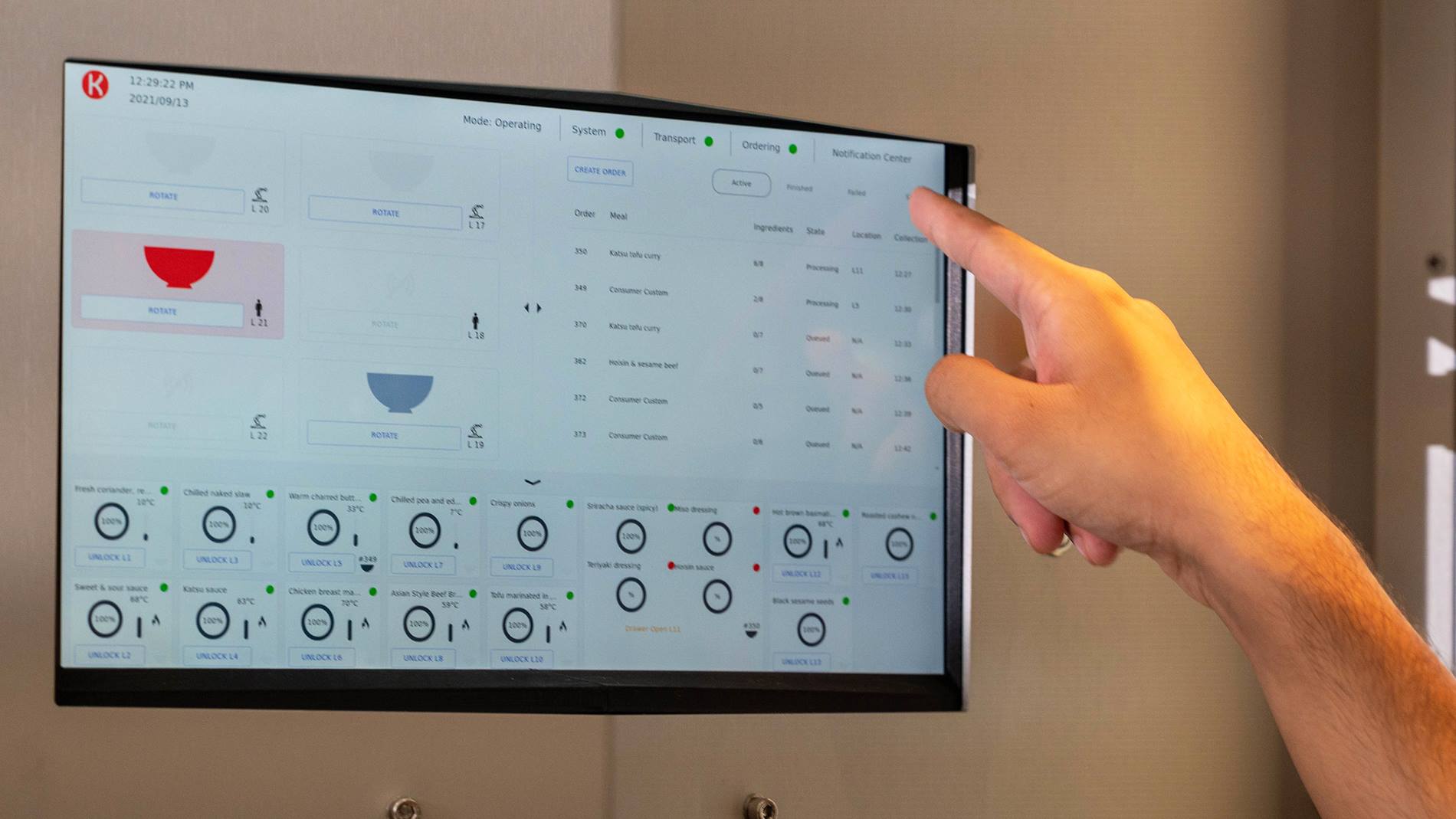
Automation in the food industry
Semblr leverages further development, and can prepare hot and cold meals as well as six different menu lines, such as cuisines from different countries. Although Semblr looks elegant and flawless in action, the road to automation was bumpy at times, the Karakuri team admitted. “Food is a very difficult raw material to process,” said Liam Rogers. “It’s sometimes sticky, sometimes liquid, sometimes clumpy. And because kitchens usually aren't very automated and have different cooks at the stove at different times, ingredient preparation varies slightly each day. One chef cuts carrots into round slices, but the next cuts them into wedges. So we needed highly flexible technology.”
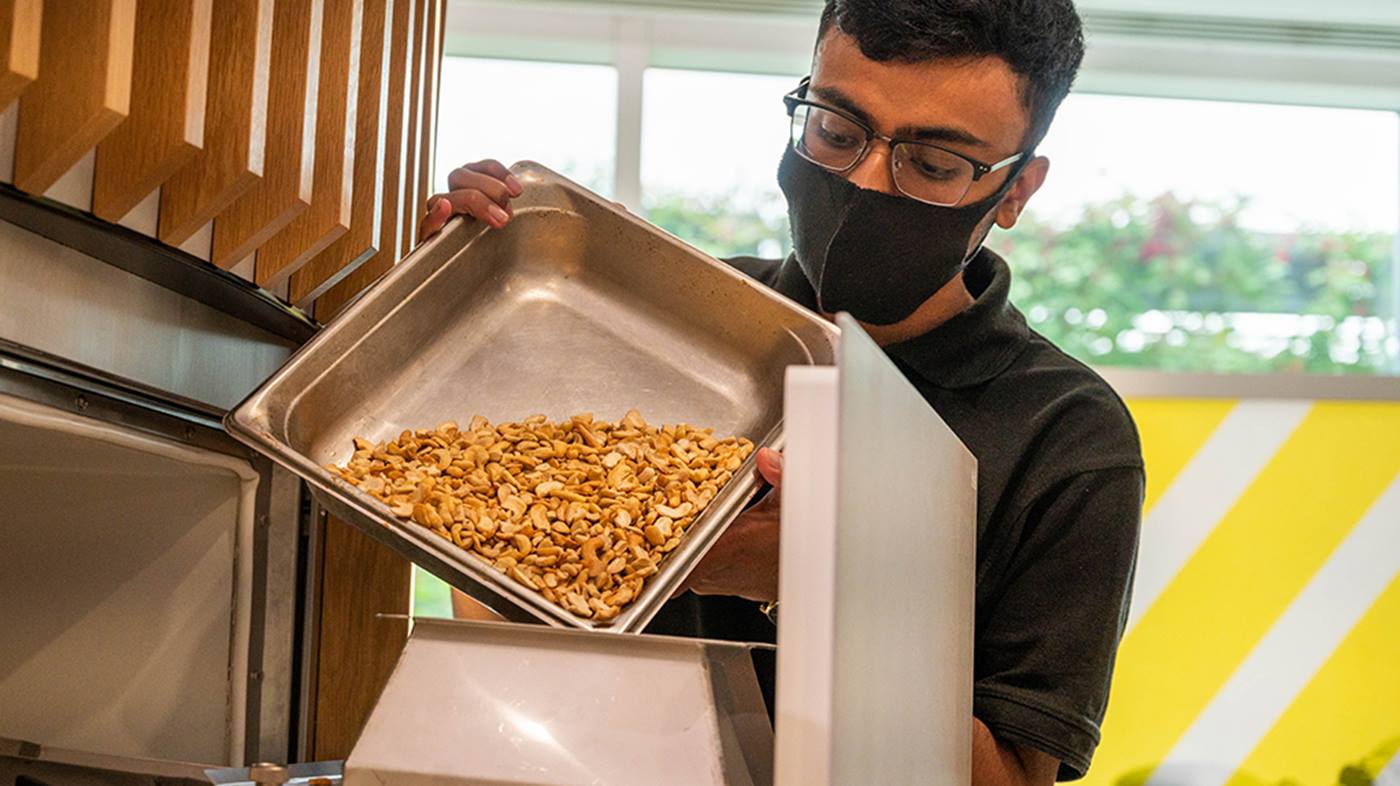
Stress test for the automation solution
Theoretically, Semblr can handle 56 ingredients in its current incarnation. In the future, it should be able to handle even more. Karakuri continues to optimize the system in operation, Joe Muller stated. “The speed is currently throttled back to 30 meals per hour. We want to stress test the system, first with 55 meals per hour, then with 60.” He estimated that a maximum of up to 110 meals per hour is realistic, “but that depends on recipe complexity and ingredient quantities.”
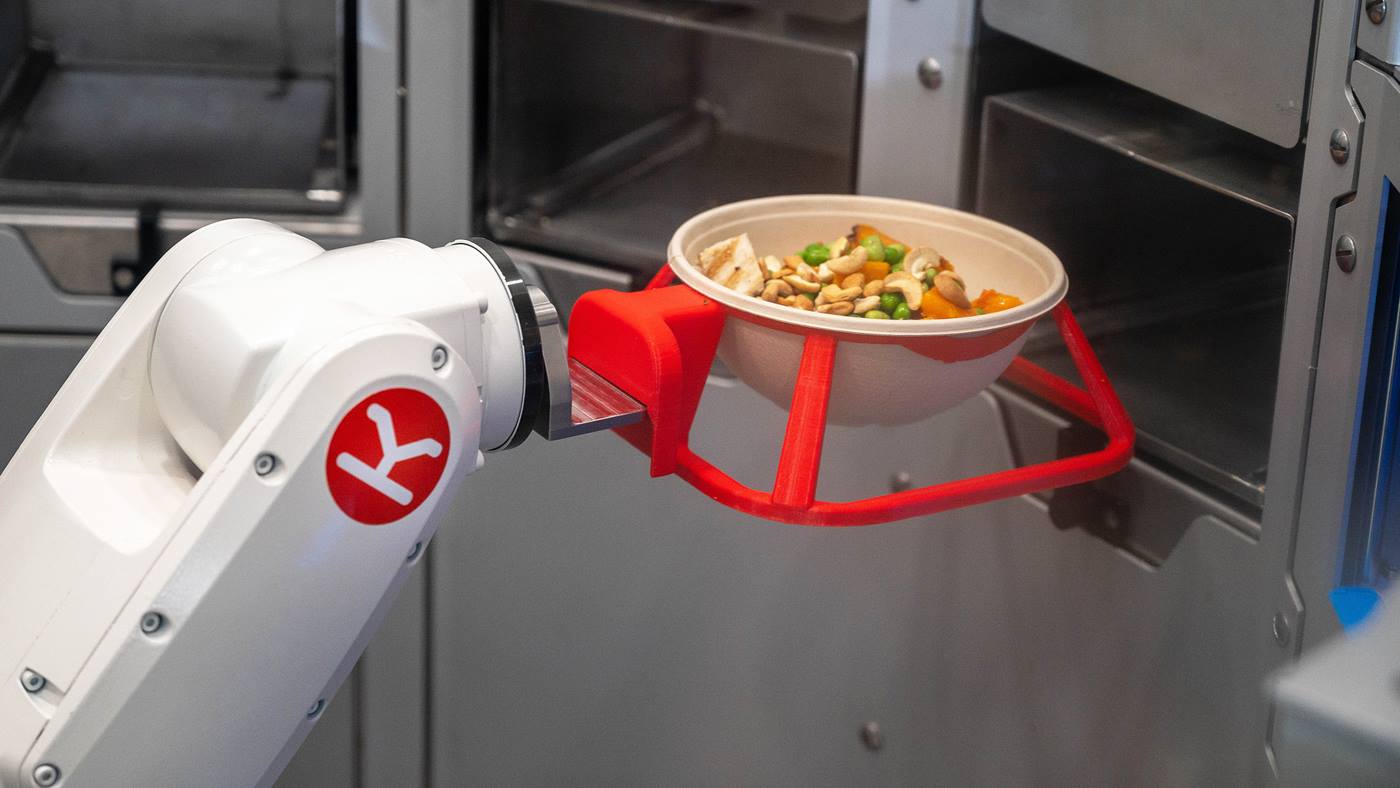
“Now they come for the food”
Ocado employees receive constant encouragement to provide feedback and know they are participating in a study. Many initially tried Semblr because they were curious about the cooking robot, reported Joe Muller, but now they come for the food. They also appreciate the fact that they can continue to use their employer’s traditional British canteen as well as Semblr. It is only with Semblr, however, that they can let their culinary creativity run wild. As Liam Rogers noted, “You can combine anything with anything else. This results in recipes that you wouldn’t put on the menu – but the guests like to customize their dishes.”
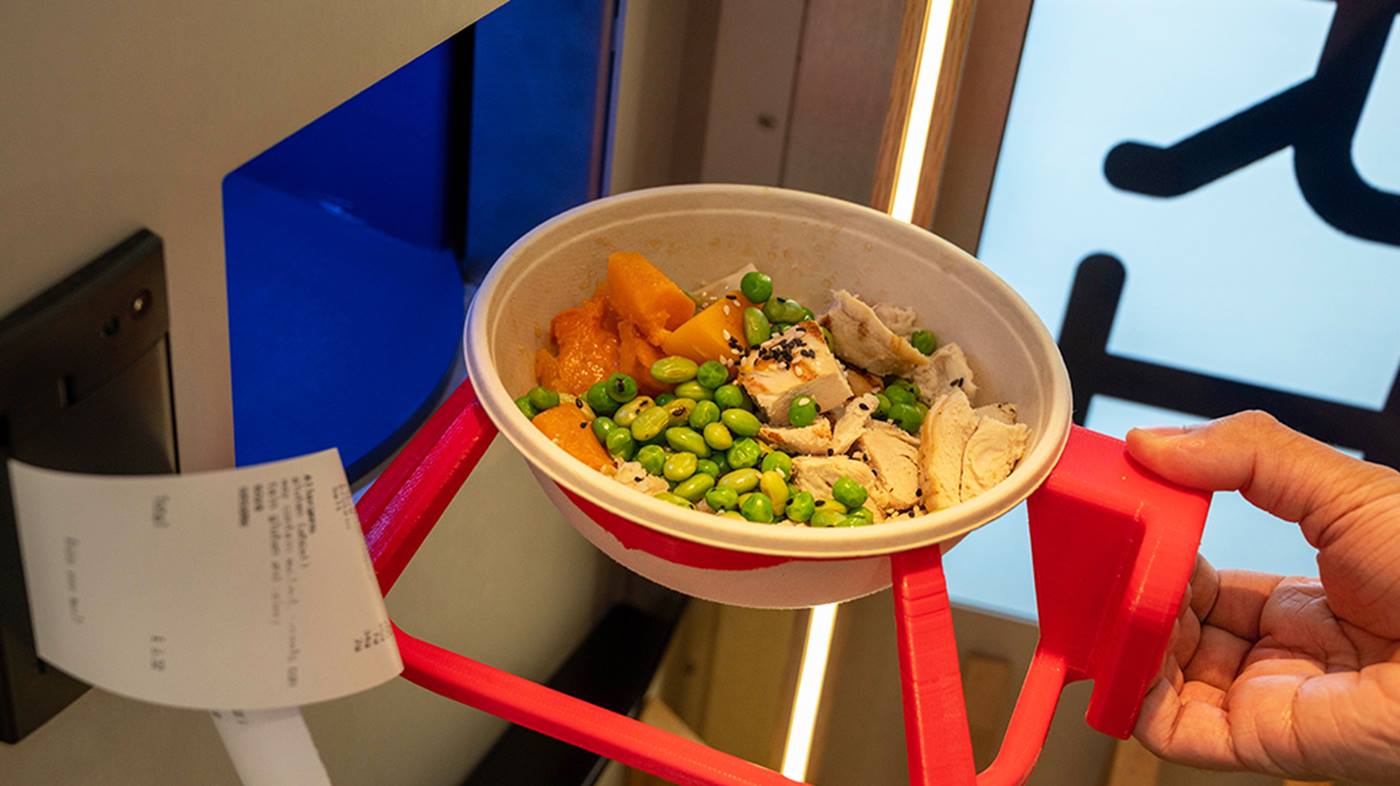
The future of gastronomy
Stewart McGuire, Head of Corporate Development and Strategy at Ocado Group, expressed his enthusiasm at the inauguration of Semblr. “Ocado and Karakuri share a vision of automating key elements within the food value chain,” he stressed. “As evidenced by the opening of our canteen, our investment goes beyond financial support, and this ‘living lab’ gives Karakuri the opportunity to conduct stress testing in a production environment. Furthermore, we can give our employees a small glimpse into the potential future of catering.”
At the start of this project, we knew nothing about industrial robotics and robot arms. The KUKA team was very helpful: They worked with us to figure out the problems we had to solve and then suggested suitable packages.
Automated solutions in global demand
The 2021 World Robotics Report provided a strong argument that service robots and cooking robots could take hold in the UK even faster than in other countries. The British food and beverage industry has nearly doubled its robot installations, from 155 units in 2019 to 304 units in 2020 (+96%). Brexit and the pandemic together led to a pronounced shortage of skilled workers in this industry. In the past, workers from other EU countries, such as those of Eastern Europe, could step in to fill the gap, but now, other solutions became necessary – including robots, for example.
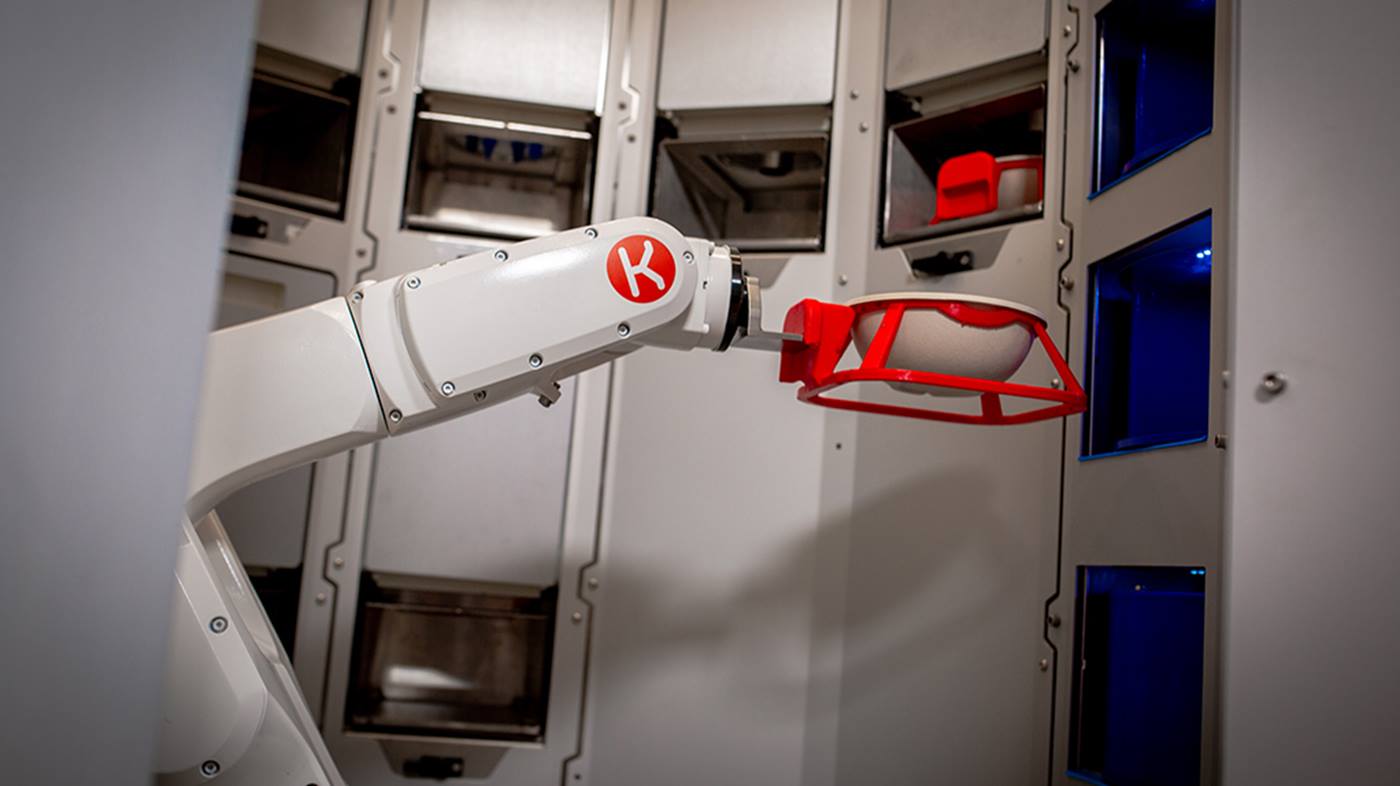
New functions, real added value
In the long term, Joe Muller emphasized, Karakuri employees will not need to supervise Semblr. The kitchen team will then be able to take over this task, resulting in fewer contacts and even better protection against infection. In the future, analysis of particularly sought-after and equally unpopular ingredients will help prevent food waste. Subsequent Semblr generations also could be connected to a smart refrigerator that would signal when an ingredient ran low. Another vision for the future is fully automated quality assurance, which will not miss so much as a single grain of rice.
